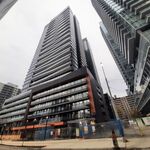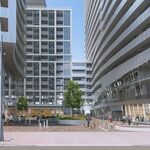Northern Light
Superstar
Valid points however I have seen proposals where not being adjacent to higher-order transit doesn’t preclude ambitious density.
But it should.
Valid points however I have seen proposals where not being adjacent to higher-order transit doesn’t preclude ambitious density.
Releasing land that would be barely make a blip when the real problem here is fiscal and policy issues that underlined the current crisis.
AoD
You know what would be actually impactful? A real program to redevelop a whole bunch of our dying malls and real limits on parking. It's absolutely insane to me how much parking there is in our suburbs. There's often more parking area than mall. We should have started forcing these stores to build parking structures a long time ago. But today is just as good a day to start.
What would be most impactful would be to release the policy restrictions around wholesale redevelopment of SFHs neighbourhoods and not insulating them from development pressures - but nothing speak of the differential in political power than the roads not taken.
AoD
Agree. We seem to have no problem expropriating valuable farmland for vaguely defined reason. I think government should step up and lead in reimagining under-utilized and poorly developed post war developments using the tools at their disposal. Yes, there may be ‘some’ yelling and screaming, but the greater good should prevale. Every major maturing city has gone through periods of rebuilding and reimagining - Toronto and the GTA should be no different.I think redevelopment of some of the most poorly thought out and least interesting subdivisions, particularly those near transit nodes makes all the sense in the world. But....it isn't just a matter of policy restrictions. Communities built with arterials 2km apart and no through roads aren't viable to support internal intensification as-is.
They require at least one new arterial (so no greater than 1km apart), which can then support transit service, and cycle tracks and they also need more means of entry/egress and some internal cul-de-sacs punched through.
That's a major planning exercise and a major infrastructure investment. Which, to be clear, I'm all in favour of making. I'm merely pointing out its not as simple as just throwing the switch and saying its legal to build 20 storeys on a side street 1km from the nearest bus stop.
Also, developers can certainly assemble, but asking even those with deep pockets to buy out 200 hundred to 600 homeowners is a logistical nighmare with high uncertainty risks.
I would argue for picking, across the GTA, 2 or 3 areas well suited to this type of change, that require one or more new roads, transit routes etc, and then having government expropriate what is necessary and then sell off the surplus, dramatically upzoned, for fair market value; or at a discount in exchange for affordable housing/rental.
I think government should step up and lead in reimagining under-utilized and poorly developed post war developments using the tools at their disposal.
Which government are you talking about? That's the question.
I think you would also need a political statement/partnership to kickstart the process, and possibly from the province, a piece of legislation that would address this specific type of land accumulation/redevelopment with its specific purpose, that might address any legal powers needed and possibly streamline the process that would use existing legal powers. This undertaking would be a form of a large scale public works program.The details should probably be worked out at the municipal level as the province and the feds are ill-equipped to plan street grids, sewers and parks.
However, there probably needs to be funding in place from senior government, something akin to what we've seen in the Portlands, (so 1/3 Federal funds, 1/3 Provincial, 1/3 City) or along these lines.
I would be careful about assuming that armouries are surplus land. Most are not, and should not be so. We have been guilty of ‘exiling’ our armed forces to outlying regions where they should be part of our communities, a greater part then they are now.For the Canada Post depot on Eastern Avenue, I’d move the Moss Park Armoury there, and then add the land to Moss Park itself to accommodate the growing population in the area, with maybe one point tower on 1/3 of the site.
As for Brampton Armoury, it is actively used by the Lorne Scots militia. DND also owns the old fire hall next door. If DND didn’t need that, it would make a good indoor space for a small year-round farmers market.
I would be careful about assuming that armouries are surplus land. Most are not, and should not be so. We have been guilty of ‘exiling’ our armed forces to outlying regions where they should be part of our communities, a greater part then they are now.
The post office is a good question. And I think it needs to come with a different business plan. End door to door mail service once and for all (Have a speciality service for those disabled enough that going to a community box is not possible) Parcel delivery would be retained, but to be competitive, some more ‘inner’ city sites may be needed to make that work. Look at how FedEx and Amazon work.
In any event not all government land will be automatically good choices for housing. Perhaps conversions of standing underused office buildings. But that is not always easy.
It can only be a piece of the puzzle.
I’m not sure quite how to answer that. If you are implying that any property involved in some nefarious activity should be……? So MLG as another example? Perhaps Union Station?The Moss Park armoury is hardly a model neighbour for the community. Remember the time a few reservists there had their kicks by beating a homeless man to death?

This photo was sent to me by a friend from another website, as we both enjoyed the cafe, but in my mind, the photos sum up so much of what we are today (especially in the 905) vs what we could be now (and are in small isolated neighbourhoods)I think redevelopment of some of the most poorly thought out and least interesting subdivisions, particularly those near transit nodes makes all the sense in the world. But....it isn't just a matter of policy restrictions. Communities built with arterials 2km apart and no through roads aren't viable to support internal intensification as-is.
They require at least one new arterial (so no greater than 1km apart), which can then support transit service, and cycle tracks and they also need more means of entry/egress and some internal cul-de-sacs punched through.
That's a major planning exercise and a major infrastructure investment. Which, to be clear, I'm all in favour of making. I'm merely pointing out its not as simple as just throwing the switch and saying its legal to build 20 storeys on a side street 1km from the nearest bus stop.
Also, developers can certainly assemble, but asking even those with deep pockets to buy out 200 hundred to 600 homeowners is a logistical nighmare with high uncertainty risks.
I would argue for picking, across the GTA, 2 or 3 areas well suited to this type of change, that require one or more new roads, transit routes etc, and then having government expropriate what is necessary and then sell off the surplus, dramatically upzoned, for fair market value; or at a discount in exchange for affordable housing/rental.




